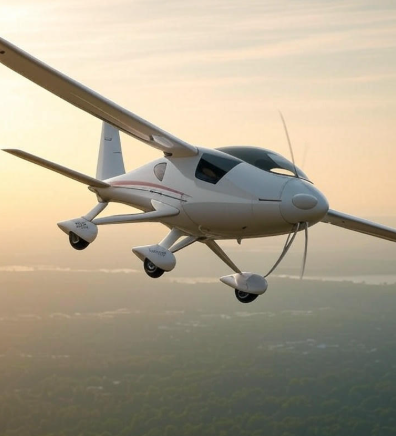Hey there, tech lovers! If you’ve been keeping an eye on the smartphone world, you’ve probably heard the buzz about Apple stepping into the foldable phone game. Yes, you read that right Apple, the company that’s been super quiet about foldable tech while Samsung and Huawei have been at it for years, is finally jumping in. The word on the street is that Apple’s first foldable iPhone is coming in 2026, and it’s shaping up to be a big deal. So, let’s dive into this exciting topic and break down everything we know so far about Apple’s upcoming foldable iPhone, from its design and features to its price and what it could mean for the future of smartphones. Grab a cup of coffee, and let’s get started!
Why Is Apple Going Foldable Now?
First things first—why is Apple even bothering with a foldable iPhone? Well, foldable phones aren’t exactly new. Samsung kicked things off with the Galaxy Fold back in 2019, and since then, companies like Huawei, Oppo, and Motorola have jumped on the bandwagon. These devices have been around for a while, but they’re still a small part of the smartphone market. According to some market research, global foldable phone sales hit 19.3 million units in 2024, which is a 6.3% increase from 2023. That’s not huge compared to regular smartphones, but it’s growing, and the potential is clear.
Apple, though, has always been a bit of a latecomer when it comes to new tech trends. They didn’t rush into OLED displays or high refresh rates like other brands did, and they’re still not fully there with super bright screens. But when Apple does join the party, they usually aim to do it better than everyone else. That’s what people are expecting with this foldable iPhone. Apple has reportedly been working on foldable tech for years, but they’ve been taking their time to get it right. And now, with rumors pointing to a 2026 launch, it seems like they’re finally ready to show the world what they’ve been cooking up.
What Will the Foldable iPhone Look Like?
So, what can we expect from the design of this foldable iPhone? Based on what’s floating around on the web, Apple is going for a book-style design, kind of like Samsung’s Galaxy Z Fold, rather than a clamshell style like the Galaxy Z Flip. This means the phone will open up like a book, giving you a big screen inside and a smaller one on the outside. Reports suggest the inner display will be around 7.8 inches, which is pretty close to the size of an iPad mini (7.9 inches). The outer screen, when the phone is folded, is said to be about 5.5 inches—smaller than the 6.1-inch screens on current iPhones, but still usable.
One of the biggest challenges with foldable phones has always been the crease in the middle of the screen where it folds. If you’ve ever seen a Galaxy Z Fold, you know that crease is pretty noticeable, and it can be distracting. But Apple is apparently obsessed with making their foldable iPhone crease-free. They’ve reportedly developed a new material to make the crease “nearly invisible,” which could give them a huge edge over competitors. Imagine unfolding your phone and seeing a smooth, seamless screen—that’s the kind of perfection Apple is aiming for.
The phone is also expected to be super thin. When unfolded, it might be as slim as 4.5 to 4.8 mm, which is thinner than Apple’s current thinnest device, the 12.9-inch iPad Pro (5.1 mm). But when folded, it’ll be thicker—around 9 to 9.5 mm. That’s still pretty slim compared to something like the Galaxy Z Fold 6, which is 12.2 mm thick when folded. Apple is also said to be using a titanium alloy frame and a stainless steel hinge, which should make the phone both lightweight and durable. Oh, and here’s a weird detail—some reports say Apple might ditch Face ID for this device and use a Touch ID power button instead. That’s a bit surprising, but maybe they’re trying to save space in that thin design.
What’s Inside? The Tech and Features
Now let’s talk about the tech inside this foldable iPhone. Apple is known for packing their devices with cutting-edge features, and this one is no exception. The foldable iPhone is expected to share a lot of tech with the upcoming iPhone 17 Air, which is rumored to be Apple’s thinnest iPhone ever at just 5.5 mm. That means we might see a similar focus on fitting powerful components into a super slim package.
The display is where things get really exciting. Apple is reportedly working with Samsung Display to create a custom OLED panel that’s not only crease-free but also thinner, brighter, and more power-efficient than what’s out there right now. Samsung has apparently figured out how to integrate the touch sensor directly into the display panel, which cuts down the thickness by about 19% compared to their current foldables. This also makes the screen more rigid and lightweight, which is a win for durability and portability. On top of that, the display is said to have better color reproduction and higher brightness levels, so everything from watching movies to browsing the web should look amazing.
As for the brains of the device, we don’t have exact details yet, but it’s safe to assume it’ll be powered by one of Apple’s latest A-series chips—maybe an A20 or something similar by 2026. Apple’s chips are already some of the best in the business, so expect top-notch performance. The phone is also rumored to have a high-density battery, which should help with battery life despite the slim design. And since this is Apple, you can bet it’ll come with all the latest iOS features—probably iOS 26 or 27 by then—with a design inspired by visionOS, the operating system for the Apple Vision Pro. Think lots of translucency and smooth animations.
Another big focus is artificial intelligence. Apple has been pushing AI hard with their Apple Intelligence features, and the foldable iPhone is expected to be a fully AI-powered smartphone. The larger screen should make multitasking a breeze, with apps that take full advantage of the extra space. Imagine having two apps open side by side, or using the big screen for productivity tasks like editing documents or sketching with an Apple Pencil. The possibilities are endless.
On the camera front, reports suggest a dual-camera setup on both the rear and the front, which should work well for both the outer and inner screens. Apple’s cameras are already fantastic, so expect great photo and video quality, with all the usual computational photography tricks.
How Much Will It Cost?
Now for the part that might make you wince the price. Apple’s foldable iPhone isn’t going to be cheap. Most reports peg the starting price at around $2,000 to $2,500 in the US. In India, that could translate to something like Rs 1,74,000 or more. For comparison, Samsung’s Galaxy Z Fold 6 is priced at around Rs 1,64,999, so Apple’s device will definitely be a premium buy. But let’s be real Apple fans are used to paying a premium, and if the foldable iPhone delivers on its promises, it might just be worth it.
The high price also makes sense when you think about the tech involved. A crease-free display, a titanium frame, a custom hinge, and all the other fancy features don’t come cheap. Plus, Apple is positioning this as a super premium device, maybe even calling it the “iPhone Ultra.” Production might be limited at first, with some analysts predicting 3 to 5 million units shipped in 2026, so it could be hard to get your hands on one right away.
What Does This Mean for the Smartphone Market?
Apple entering the foldable market is a big deal, and it could shake things up in a major way. Right now, foldables are still a niche product, but Apple has a way of making new tech mainstream. Just look at what happened with wireless earbuds after the AirPods came out, or how the Apple Watch became the gold standard for smartwatches. If Apple nails the foldable iPhone, it could spark a huge wave of demand and push other companies to up their game.
Analysts are already predicting that Apple could ship up to 20 million units of the second-generation foldable iPhone in 2027, which is a massive number for a foldable device. For context, the Galaxy Z Fold 6 reportedly hit 3 million shipments five



